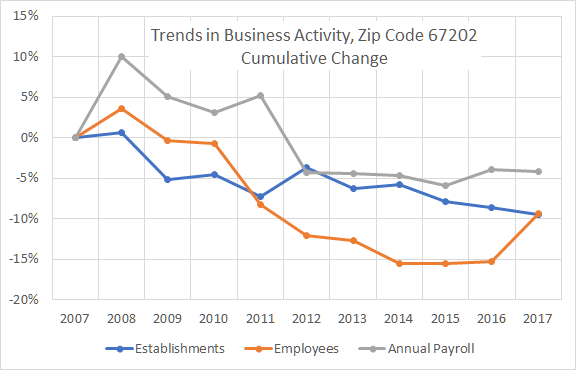The Wichita city council will consider a tax giveaway for an economic development project that does not meet its stated policy.
Tomorrow the Wichita City Council will consider issuing up to $33 million in Industrial Revenue Bonds in relation to a project at the Wichita State University Innovation Campus.
Despite its name, in the IRB program the city does not purchase bonds or lend money. The city does not guarantee the payment of the bond interest or principle. Instead, the IRB program allows the city to grant tax forgiveness, both property tax and sales tax. 1 City documents explain: “MWCB is also requesting a sales tax exemption on items purchased for the project and a 100% five-year tax exemption on the IRB-financed real property improvements plus a second five-year exemption subject to City Council approval.” 2 (emphasis added)
How much tax is being forgiven? For property tax, $773,604 annually for up to ten years, again from city documents:
Based on the latest available mill levy, and assuming that the real property improvements are valued at 80% of the actual capital investment, the estimated value of the property tax abatement for the first full year is approximately $773,604. The value of a 100% real property tax exemption as applicable to the taxing jurisdictions is:
City $215,767
State $9,900
County $193,927
USD 259 (Wichita Public School District) $354,010
City documents don’t estimate the amount of sales tax savings, but if all the bond proceeds were spent on taxable items, the savings would be $2,475,000.
This project fails to meet standards set by the city and county for payback from economic development incentives. According to the city’s economic development pages, “City benefit/cost ration must be at least 1.3 to 1.” 3 This requirement is repeated in the Sedgwick County/City of Wichita Economic Development Policy: “The ratio of public benefits to public costs, each on a present value basis, should not be less than 1.3 to one for both the general and debt service funds for the City of Wichita; for Sedgwick County should not be less than 1.3 overall.” 4
The benefit-cost ratios supplied for this project don’t meet the city and county standards, again from city documents:
A benefit/cost analysis was performed by Wichita State University’s Center for Economic Development and Business Research based upon the proposed Letter of Intent, with the following ratio of benefits to costs:
City of Wichita 1.18 to 1.00
City General Fund 1.10 to 1.00
City Debt Service 1.37 to 1.00
Sedgwick County 1.11 to 1.00
USD 259 1.34 to 1.00
State of Kansas 5.08 to 1.00
While the 1.3 to one threshold is met for the city’s debt service fund, it is not met for the city as a whole. Additionally, it doesn’t meet the 1.3 to one threshold for Sedgwick County. The Sedgwick County/City of Wichita Economic Development Policy specifies mitigating factors that can be used to bypass the 1.3 to one requirement, but city documents do not mention these.

—
Notes
- Weeks, Bob. Industrial revenue bonds in Kansas. Available at https://wichitaliberty.org/kansas-government/industrial-revenue-bonds-kansas/ ↩
- Agenda packet for January 21, 2020, item V-1. Available at https://www.wichita.gov/Council/Agendas/01-21-2020%20Final%20Agenda%20packet.pdf. ↩
- City of Wichita, Economic Development programs. Available at https://www.wichita.gov/Economic/Pages/Programs.aspx ↩
- Available at https://www.wichita.gov/Economic/EconomicDevelopmentDocuments/City%20of%20Wichita%20Economic%20Development%20Policy.pdf. ↩









































